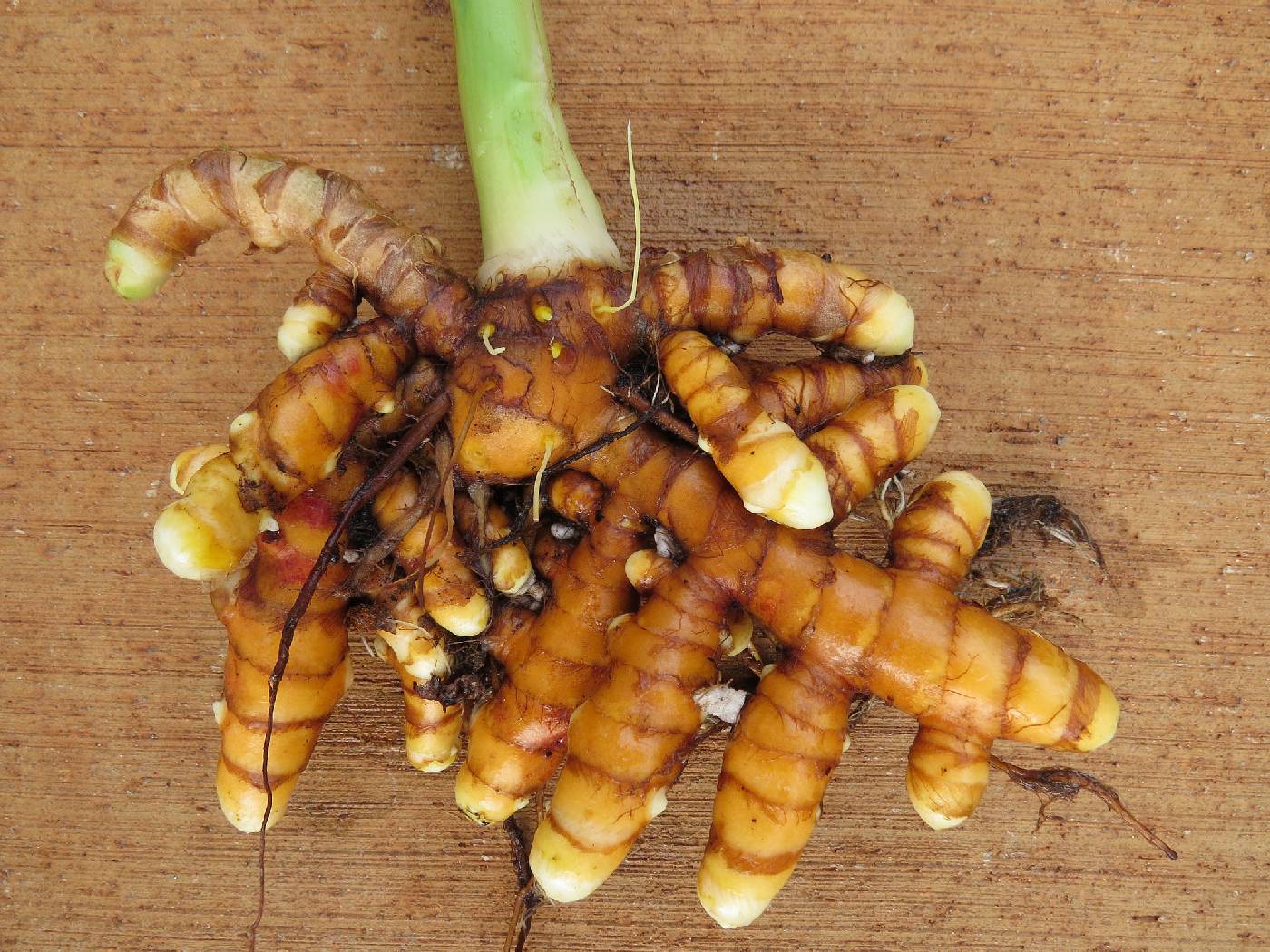
India; widely distributed in cultivation; in Guam sparingly naturalized. Mangilao (4164); Umatac (4395). "Wild," ace. to Safford.
Source of a yellow dye (from the roots) and a condiment, turmeric.
Curcuma domesiica Vateton in But). Jard. Bot Buiwnzorg It. 27: 31. 1918; Hoiltum in Gard. Boll. Singapore 13:6S.fig. 4.195$, Bufkitt, Diet. Econ. Prod. Middy Penins, ed. 2.716.1966; Sykes in New Zealand Dept. Sei. Indust. Res Bull. Mfc 271. 197$ St. John & A.C. Sm. in Pacific Sci, 2«: 346. 1971; Burtt & R. M. Sm. in NotoRoy. Bot. Gard, Edinburgh 31s 183,203.1972.
Curcuma sp. Christopbersen in Bishop Mus. Bull. 128: 57. 1935.
In Fiji Curcuma is naturalized in woods and forest, sometimes locally frequently, at elevations from near sea level to about 250 m. It is an herb forming dense clumps, with leafy pseudostems to about f m. high, with white to green bracts; the inner perianth segments are white, and the labellum is cream-white with a yellow median band. However, the species has seldom if ever been found fertile m Fiji.
TYPIFICATION AND NOMENCLATURE: This is discussed above under the genus. For Curcuma domestica, Valeton took Konig’s 1783 description as the type; this was based on a now lost Konig collection from Malaya.
DISTRIBUTION: The country of origin is not definitely known (cf. Hohlum, 1950, cited above), but the species is widely cultivated in Indo-Matesta and has been aboriginally introduced throughout the Pacific. In Fiji it is so thoroughly naturalized as to appear indigenous, but it does not appear to heextcnsivelyif at all cultivated.
LOCAL NAMES AND USES: Turmeric, thango; avaa; /Mb&re#re«ga(the bet per¬haps for the prepared powder). The rhizeMe is used in the preparation of curry; its orange-colored powder is used in various ceremonies, as a cosmetk, sometimes to paint newborn babies, and also as a medicinal poultice to relieve {bin.
AVAILABLE COLLECTIONS: YASAWAS: Yakwnbi, St. jtfori f&027. VITI LEVU: NANOBONGA & NAVOSA: In or near tbe ok town of Tonave, ft. B. K. JMum 727, MS. Fin without further locality, Sre mamt 623. Horne r.n.
Curcuma longa is widespread in the Old World tropics from West Africa to eastern Polynesia, but is thought to have originated in cultivation somewhere in Southeast Asia (it is not known to occur in the wild state), and from there was carried throughout the Pacific by early voyagers. Turmeric occurs mostly in plantations and around home sites in Tonga. Since it is unable to set seed, it is not naturalized, and any occurrence in forested areas is usually a result of past cultivation. Turmeric is esteemed throughout its range as a condiment (especially in Asia, where it is an essential ingredient in curry), and for the light yellow or yellow-orange dye extracted from the rhizome. The plant is a glabrous, erect herb up to 1 m in height, arising from a fleshy, yellow, aromatic rhizome. The erect leaves have a finely parallel-veined, lanceolate to elliptic blade up to 40 cm long. The flowers are in a cylindrical spike 12‒25 cm long on a leafless flowering stalk, and are borne in few-flowered clusters among the numerous, overlapping, green to reddish bracts. The white to yellow, tubular perianth (corolla plus calyx) is mostly 2.5‒5 cm long. Flowering is infrequent, and no are seeds produced.
Copyright ©2018. This project is managed by the St. George Village Botanical Garden and the portal development is powered by Symbiota software. Usage Policy.


